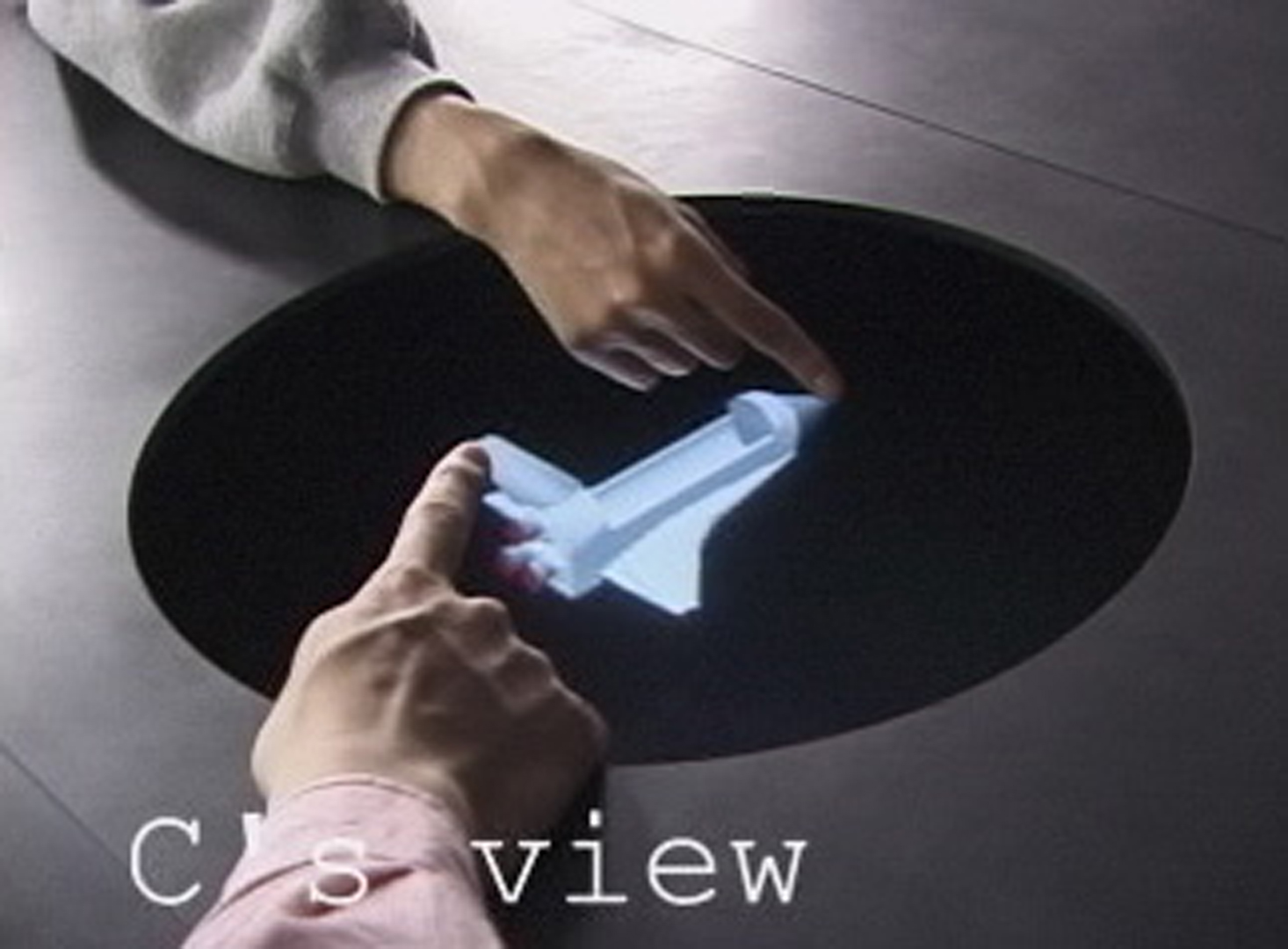“Interactive stereoscopic display for three or more users” by Kitamura, Konishi, Yamamoto and Kishino
Conference:
Type(s):
Title:
- Interactive stereoscopic display for three or more users
Presenter(s)/Author(s):
Abstract:
An ideal stereoscopic display system for multiple users is proposed. It allows three or more people to simultaneously observe individual stereoscopic image pairs from their own viewpoints. The system tracks the head positions of all of the users and generates distortion-free images for each eye of each user. The system consists of a normal display and a display mask, which has a hole in its center. The display mask is placed over the display surface at a suitable distance from it. By controlling the position of the image drawing area for each user according to the corresponding user’s viewpoint, each user can observe the stereoscopic image pairs shown in an individual area of the display system with shutter glasses. On the other hand, no user is able to see the image drawing areas of the other users because these areas are adequately occluded by the display mask. Accordingly, the display system can simultaneously provide intelligible 3D stereoscopic images for three or more moving observers without flicker or distortion.
References:
1. Pierre St. Hilaire, Stephen A. Benton, Mark Lucente, Mary Lou Jepsen, Joel Kollin, Hiroshi Yoshikawa, and John Underkoffler. Electronic Display System for Computational Holography. In Proceedings of SPIE, Vol. 1212, pp. 174-182, 1990.
2. Stephen A. Benton, Pierre St.-Hilaire, Mark Lucente, John D. Sutter, and Wendy J. Plesniak. Real-time computer-generated 3D holograms. In Proceedings of SPIE, Vol. 1983, pp. 536- 543, 1993.
3. Larry F. Hodges. Tutorial: Time-multiplexed stereoscopic computer graphics. IEEE Computer Graphics and Applications, Vol.12, No.2, pp. 20-30, 1992.
4. Warren Robinett and Richard Holloway. The visual display transformation for virtual reality. Presence, Vol. 4, No. 1, pp. 1-23, 1995
5. Carolina Crus-Neira, Daniel J. Sandin, and Thomas A. DeFanti. Surround-screen projection-based virtual reality: the design and implementation of the CAVE. In SIGGRAPH 93 Conference Proceedings, Annual Conference Series, pp. 135-142, 1993.
6. Colin Ware, Kevin Arthur, and Kellogg S. Booth. Fish tank virtual reality. In Proceedings of INTERCHI 93, pp. 37-41, 1993.
7. Wolfgang Kruger, Christian-A. Bohn, Bernd Frohlich, Heinrich Schuth, Wolfgang Strauss, and Gerold Wesche. The responsive workbench: a virtual work environment. IEEE Computer, pp. 42-48, July 1995.
8. Fumio Kishino, Tsutomu Miyasato, and Nobuyoshi Terashimna. Virtual space teleconferencing – communication with realistic sensations. In Proceedings of IEEE International Workshop on Robot and Human Communication, pp. 205-210, 1995.
9. Maneesh Agrawala, Andrew C. Beers, Bernd Frohlich, and Pat Hanrahan. The two-user responsive workbench: support for collaboration through individual views of a shared space. In SIGGRAPH 97 Conference Proceedings, Annual Conference Series, pp. 327-332, 1997.
10. Tsutomu Miyasato and Ryohei Nakatsu. A study of a multistereoscopic display system for multi-viewers. In Proceedings of IEICE General Conference, A-16-21, 1997 (in Japanese).
11. Katsuyuki Omura, Shinichi Shiwa, and Fumio Kishino. Development of lenticular stereoscopic display system: multiple images for multiple viewers. In SID ’95 Digest, Society of Information Display, pp. 761-764, 1995.
12. Graham J. Woodgate, David Ezra, Jonathan Harrold, Nicolas S. Holliman, Graham R. Jones, Richard R. Moseley. Observer tracking autostereoscopic 3D display systems. In Proceedings of SPIE, Vol. 3012, pp. 187-198, 1997.
13. Ken Perlin, Salvatore Paxia, Joel S. Kollin. An autostereoscopic display. In SIGGRAPH 00 Conference Proceedings, Annual Conference Series, pp. 319-326, 2000.
14. Kazuo Nakazawa, Tohru Suzuki, Takashi Ashihara, Masashi Inagaki, Tsunetoyo Namba, Takanori Ikeda, and Ryoji Suzuki. Computational analysis and visualization of spiral wave reentry in a virtual heart model. Takami Yamaguchi, editor, Clinical Application of Computational Mechanics to the Cardiovascular System, pp. 217-241, Springer-Verlag Tokyo, 2000.





